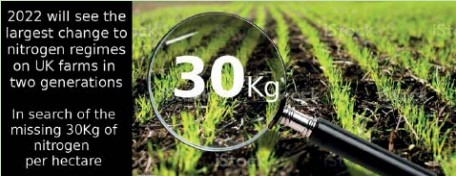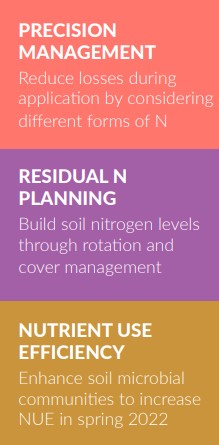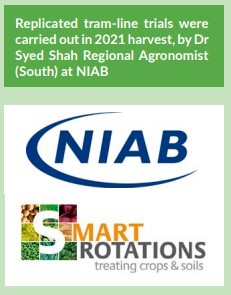Written by Richard Rawlings, Agronomist, Zantra Ltd and Robert Patten, PlantWorks Ltd
The application of nitrogen on-farm will be under pressure in spring 2022, due both to its price, at the time of writing hovering at £650.00 /t and its availability, so far government intervention has done little to ease either price or supply.

The reason for the price rise has been well reported as it directly links to the gas price. Natural gas is used in the production of anhydrous ammonia gas, which forms the base of most types of modern nitrogen fertilisers. Whereas in other industries the power source for manufacturing can be switched (oil to gas or gas to electricity), this is not the case here. Natural gas is essential to achieve not only the high temperatures to enable the process, but it is also a source of hydrogen required in the reaction. Thus, we are wed to its continued use.
A perfect storm has led to the gas price rise, including greater global demand due to colder weather in Asia, depletion of European stocks and of course politics and war. There is no solace in the fact, but we are not alone in experiencing higher than expected nitrogen prices as we share the pain with Europe and beyond with US fertiliser prices reaching record highs. The reality is that 2022 will see the largest change to nitrogen regimes used on UK farms in two generations. Many farmers have already committed to winter wheat and in the coming months they will be considering the economics of growing the crop in 2022. Subject to farmers being able to afford the market prices, and indeed to source nitrogen, it is generally accepted that most farmers will need to modulate their nitrogen inputs by up to 30kg a hectare.
Not looking for false silver linings but this may create an opportunity to consider the rates we currently use on farm as norms. Work undertaken by the National Institute of Agricultural Botany (NIAB) in 2020 looking at nitrogen reduction rates in winter wheat showed little difference in yield between 100% application (250kg/h) and 70% rate, with any decline being offset by the costs of application.
Unfortunately, the wet winter of 2020/21 could have depleted much of the residual nitrogen from UK agricultural soils. This article comes a little late for promoting the use of legume-based cover crops, but spare a thought for this approach next year, equally a fundamental review of your rotations could be due in 2022 to include the use of known nitrogen fixers. Many agronomists out there can expect some challenging questions from clients as they seek to manage soil nitrogen in 2022 and beyond.
Efficiency will be critical to the economics for winter wheat in 2022. Many farmers will be considering the move to liquid nitrogen application for ease of use, storage, accuracy or to combine tank mixes and reduce fuel costs. The adoption of more precise agricultural techniques allows for a faster response to crop needs and protein management.
Another area of improved management is Nutrient Use Efficiency (NUE). One of the ways to use less fertiliser is to ensure that the majority of the applied Nitrogen, Phosphorus and Potassium (NPK) is taken up by the plant. Where previously we may have accepted nutrient losses to leaching, volatilisation or becoming chemically soil-bound we now know more about the plant, soil and nutrient interactions and we can manage these to improve the nutrient flow into the crop. Many of the nutrients that are taken up by plants are first metabolised (digested) by microbes in the soil that strip away and re nature the chemistry to make it plant available. In many cases the interaction between plant and microbes goes further with, for example, plants with a strong association of mycorrhizal fungi turning down their own mechanism for up-taking phosphorus in favour of taking it up more efficiently from the fungal network.
Ironically the use of sustained chemical inputs in farming reduces the functioning of the crop microbiome and decreases its value to the farming system. Biofertilisers can be used to redress this imbalance and used routinely to increase NUE. Commonly available biofertilisers include both mycorrhizal fungi and Plant Growth Promoting Bacteria (PGPR). The latter group are the most relevant to farmers that have planted winter wheat in 2021 as they are spray applied in the following spring. Trials in the UK under commercial nitrogen regimes have sown that nitrogen can be modulated downward post application of PGPR with these beneficial bacteria acting both to increase nitrogen uptake and to trap nitrogen offering an additional slow-release mechanism.

There has rightly been an increasing focus on soil health over the last decade as farmers become more aware that they are managing soil as a key asset on farms. As we move focus from maximising crop yield to maximising profit, there are new methods of precision agriculture, smart rotations, and microbial technologies to adopt to address ‘the missing 30Kg/h’ on farm.
